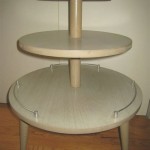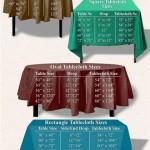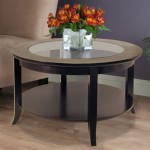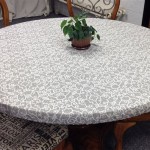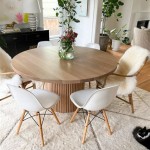How to Use a Tablecloth as a Backdrop
Utilizing a tablecloth as a backdrop is a budget-friendly and surprisingly versatile technique applicable to various creative endeavors ranging from photography and videography to event decorations and crafting projects. The accessibility and affordability of tablecloths, coupled with the diverse range of colors, patterns, and materials available, make them a practical alternative to professional backdrops purchased from specialty retailers. This article details the necessary steps to effectively employ a tablecloth as a backdrop and outlines considerations for achieving optimal results.
Selecting the Right Tablecloth
The initial step in utilizing a tablecloth as a backdrop involves selecting a suitable option based on the intended application. Crucial factors to consider include size, material, color, and pattern. The required size directly correlates to the intended subject or area to be covered. For instance, photographing small objects requires a smaller tablecloth compared to photographing a person or a group. Measure the anticipated area to ensure adequate coverage, allowing for sufficient draping or overlap as needed.
The material of the tablecloth significantly impacts the aesthetic and functionality of the backdrop. Cotton and linen tablecloths offer a natural, textured appearance and are generally less reflective than synthetic materials. They are also relatively easy to iron and maintain. However, they may wrinkle more easily and require more diligent pressing. Polyester tablecloths, conversely, are more resistant to wrinkles and stains and tend to be more durable. These are often a practical choice for repeated use, but they can produce unwanted glare under certain lighting conditions. Sequined or metallic tablecloths can add a decorative, festive touch suitable for specific themes, but their reflectivity must be carefully managed to avoid overexposure in photography or videography.
Color and pattern selection are paramount considerations since these elements directly influence the overall mood and visual impact of the backdrop. Solid, neutral colors such as white, gray, or black offer versatility and avoid drawing unnecessary attention away from the subject. These shades are particularly well-suited for portrait photography, product photography, and video interviews. Bold colors and intricate patterns can be employed to create a specific atmosphere or complement a thematic event. However, it is crucial to ensure that the color and pattern do not clash with the subject or distract from the primary focus of the image or video. Consider the color palette of the subject and surroundings to create a cohesive and visually appealing composition.
Preparing the Tablecloth
Prior to using the tablecloth as a backdrop, proper preparation is essential to minimize distractions and ensure a professional appearance. This primarily involves addressing wrinkles and creases that can detract from the overall aesthetic. The method of wrinkle removal depends on the material of the tablecloth. Cotton and linen tablecloths can be effectively ironed using a steam iron on a medium to high heat setting. Ensure the iron is clean and free from any residue to prevent staining the fabric. For delicate fabrics, consider using a pressing cloth between the iron and the tablecloth to protect the fibers.
Polyester tablecloths generally require lower heat settings when ironing. Test a small, inconspicuous area first to avoid melting or damaging the fabric. Alternatively, a garment steamer can be used to gently remove wrinkles without the direct contact of an iron. This method is particularly useful for delicate or embellished tablecloths that might be damaged by ironing. Hanging the tablecloth in a steamy bathroom can also help to release wrinkles naturally. Allow the steam to penetrate the fabric for several minutes, then smooth out any remaining creases by hand.
In addition to wrinkle removal, inspect the tablecloth for any stains or imperfections. Small stains can often be removed with a mild detergent or stain remover. Test the cleaning solution on an inconspicuous area first to ensure it does not discolor or damage the fabric. For stubborn stains, professional cleaning may be necessary. Imperfections such as tears or holes should be mended or concealed to avoid visual distractions. Minor tears can be sewn or patched, while larger holes may require more extensive repair. Consider using fabric glue or adhesive patches to conceal imperfections if sewing is not an option.
Setting Up the Backdrop
Proper setup is critical for achieving the desired effect when using a tablecloth as a backdrop. Several methods can be employed to suspend or support the tablecloth, depending on the available resources and the intended application. A backdrop stand, consisting of two vertical supports and a horizontal crossbar, is the most professional and versatile option. These stands are adjustable in height and width, allowing for customization based on the size of the tablecloth and the subject being photographed or filmed.
To attach the tablecloth to the backdrop stand, consider using clamps, clips, or safety pins. Clamps provide a secure grip and are less likely to damage the fabric. Clips are a lightweight and convenient option for smaller tablecloths. Safety pins can be used as a last resort, but exercise caution to avoid tearing the fabric. Ensure the tablecloth is evenly distributed across the crossbar to prevent sagging or uneven draping.
If a backdrop stand is not available, alternative methods can be used to suspend the tablecloth. A temporary backdrop can be created by using a pre-existing structure such as a wall or a door. Hang the tablecloth using tacks, tape, or adhesive hooks. Tape can be used to affix the top edge of the tablecloth to a wall, but select a tape that is designed for delicate surfaces to avoid damaging the paint or wallpaper. Adhesive hooks provide a more secure and reusable option for hanging the tablecloth. Ensure the hooks are strong enough to support the weight of the fabric.
Another option is to use a curtain rod or a clothesline. Drape the tablecloth over the rod or line, ensuring it is evenly distributed. Use clothespins or clips to secure the tablecloth in place. This method is particularly well-suited for creating a simple and inexpensive backdrop for smaller subjects. The surroundings immediately in front of the backdrop are important. Ensure that there are no distracting objects or elements in the foreground. Adjust the lighting as needed to eliminate shadows and create a smooth, even illumination.
Lighting Considerations
Effective lighting is crucial for optimizing the visual impact of a tablecloth used as a backdrop. The type of lighting employed depends on the material, color, and pattern of the tablecloth, as well as the desired aesthetic. Natural light can be an excellent option for certain applications, particularly when using light-colored or textured tablecloths. Position the subject near a window or other source of natural light, ensuring the light is diffused to avoid harsh shadows. A sheer curtain or diffuser can be used to soften the light and create a more flattering effect.
Artificial lighting, such as studio lights or LED panels, offers greater control over the illumination and is essential for achieving consistent results in various conditions. When using artificial lighting, consider the color temperature and intensity of the light source. Warm-toned lighting can create a cozy and inviting atmosphere, while cool-toned lighting provides a more neutral and professional look. Adjust the intensity of the light to avoid overexposure or underexposure, ensuring the subject is properly illuminated.
Pay close attention to shadows when setting up the lighting. Shadows can add depth and dimension to an image or video, but they can also be distracting if they are too harsh or uneven. Use reflectors or diffusers to fill in shadows and create a more balanced illumination. Experiment with different lighting angles and positions to find the optimal configuration for the subject and the backdrop. Avoid placing the light source directly behind the subject, as this can create a silhouette effect. Instead, position the light source at an angle to the subject to create more flattering and natural-looking shadows.
Practical Applications
The versatility of a tablecloth as a backdrop lends itself to a wide array of practical applications. In photography, utilizing a tablecloth as a backdrop is invaluable for product photography, portrait photography, and food photography. Its adaptability enables photographers to create visually appealing images without the expense of professional studio equipment. For product photography, a simple, solid-colored tablecloth provides a clean and uncluttered background that highlights the features of the product. In portrait photography, textured tablecloths can add depth and visual interest to the background, while solid-colored tablecloths offer a neutral canvas that focuses attention on the subject.
Videography benefits similarly from tablecloth backdrops. They can be used for video interviews, online tutorials, and live streaming. A wrinkle-free tablecloth creates a professional and distraction-free background that enhances the quality of the video. When selecting a tablecloth for videography, choose a material and color that minimizes glare and reflections. Solid colors are generally preferred, as intricate patterns can be distracting on camera.
Beyond photography and videography, tablecloths also function as event decorations. A decorative tablecloth can serve as a focal point at a party, wedding, or other special occasion. Sequined, metallic, or patterned tablecloths can add a touch of elegance and festivity to the event. Use them to create photo booths or themed displays. Tablecloths also serve as backdrops for crafting projects. They can be used as a surface for painting, drawing, or other creative activities. A vinyl or plastic tablecloth protects the underlying surface from spills and stains, while a fabric tablecloth provides a comfortable and textured surface for working on various projects.

The Easiest Diy Fringe Tablecloth Party Backdrop Ever

Tablecloth Backdrop Diy 4 Easy Steps Mistakes To Avoid Tablecoversnow Com

Photo Booth Backdrop Makoodle

Diy Pinata Fringe Photo Backdrop A Kailo Chic Life

And Easy Party Background With Tablecloths Part 2 Rain On A Tin Roof

Tablecloth Backdrop Diy 4 Easy Steps Mistakes To Avoid Tablecoversnow Com

Photo Booth Backdrop Makoodle

Easy Diy Fringe Backdrop A Step By Tutorial

D I Y Photo Booth Backdrop For 10 The Thinking Closet

Diy Pinata Fringe Photo Backdrop A Kailo Chic Life
Related Posts

